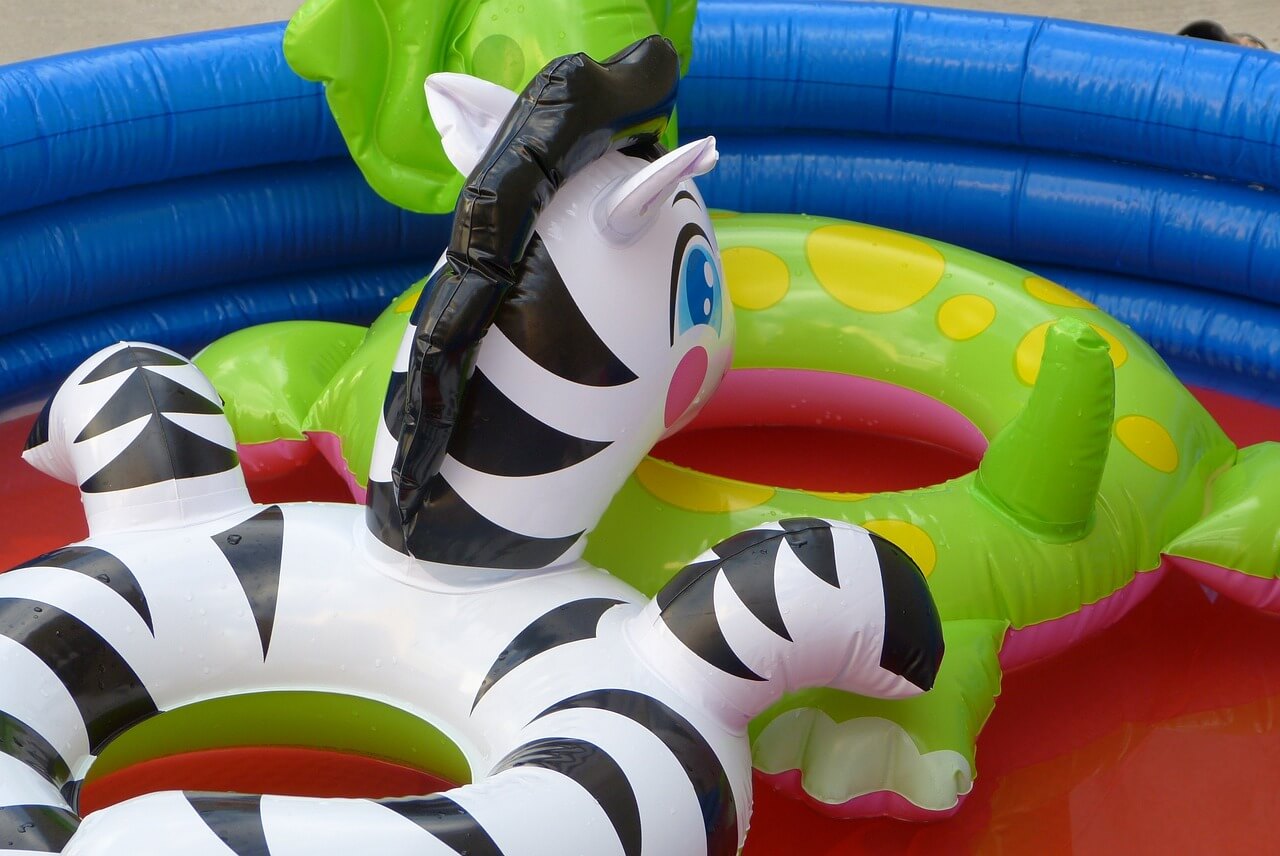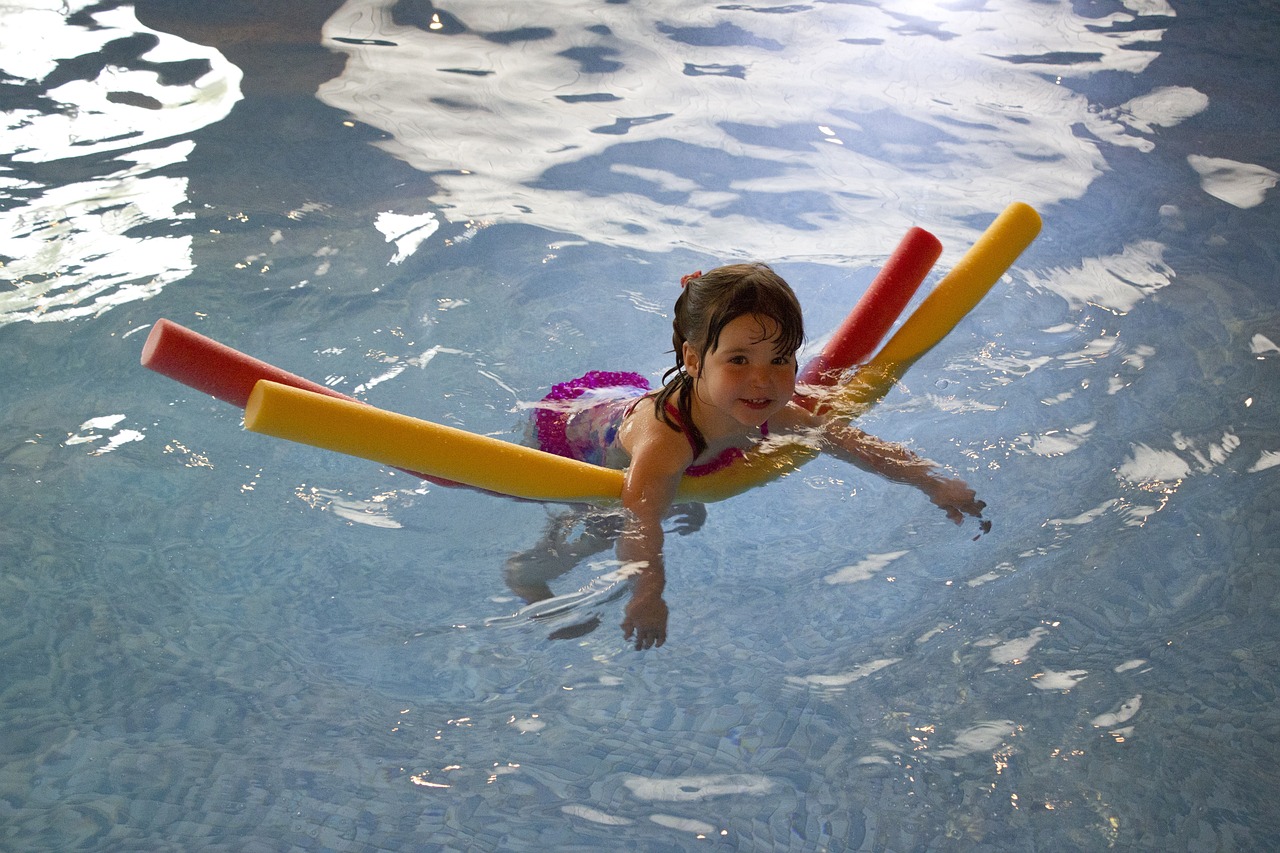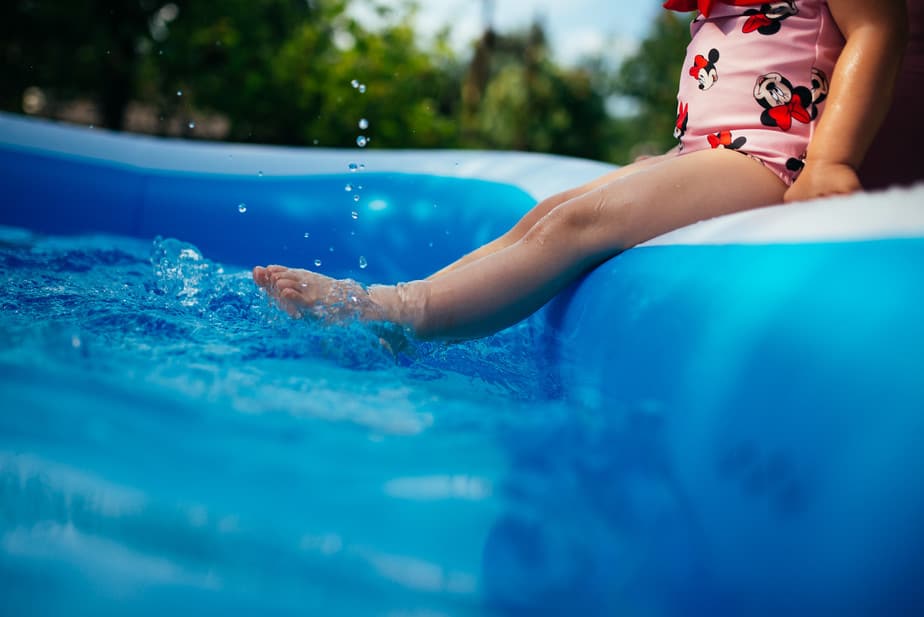Have you ever wondered what your favorite pool floats are made of? As you relax on your colorful inflatable, it’s fascinating to consider the materials and technology that go into creating these essential summer companions.

In this article, you’ll discover the most common materials used in the manufacturing of pool floats, such as PVC and naphthalene, as well as some innovative advancements in the industry, like cool weave fabric for extra comfort. By the end, you’ll have a deeper appreciation for what goes into making your go-to pool accessories.
So, let’s dive into the world of pool floats and explore their composition – you might be surprised by what you learn and even more excited to enjoy them during your next poolside outing!
Materials Commonly Used in Inflatables
In this section, we will discuss the different materials commonly used in pool floats to help you better understand their properties and applications. The main materials we will cover include PVC Vinyl, Polyethylene Foam, EVA Foam, and Inflatable Nylon Fabric.
PVC Vinyl
PVC (Polyvinyl Chloride) is the primary material used in many inflatable pool floats. It is a popular choice for its durability and flexibility. This material can withstand the harsh pool environment – including chlorinated water, sunlight, and abrasion.
PVC floats are often combined with plasticizers, such as phthalates, to make them softer and more comfortable for you to lounge on. They are also the most commonly used materials in inflatable pools.
Naphthalene
Naphthalene is used in the production of PVC. Specifically, naphthalene is used to make a chemical called vinyl chloride, which is used to create PVC, a type of plastic that is commonly used in making pool floats.
Polyethylene Foam
Polyethylene foam, also known as PE foam, is another common material used in pool floats such as pool noodles. Unlike PVC, PE foam is not inflatable and instead provides a solid, buoyant base.
This foam material is lightweight, water-resistant, and easy to clean. Polyethylene foam is an excellent choice if you’re looking for a more rigid and supportive float.
EVA Foam
EVA (Ethylene-Vinyl Acetate) foam is a soft, closed-cell foam material that is sometimes used in pool floats like kickboards. EVA foam is known for its water resistance, buoyancy, and cushioning properties.
It is more prone to wear and tear over time due to its less durable nature compared to other materials. EVA foam can be an ideal choice for lighter-weight pool floats and accessories, such as kickboards and pull buoys, that require a comfortable grip.
Inflatable Nylon Fabric
Inflatable nylon fabric is a material used in high-quality, heavy-duty pool floats. It provides excellent strength and durability, often with a polyester mesh lining for added support. This fabric is coated with PVC or TPU to ensure its water resistance and air retention capabilities.
Inflatable nylon fabric can give you a more comfortable floating experience while providing a longer lifespan for your pool float.
Polyester Mesh
Polyester mesh is a fabric used in pool floats to increase their durability and strength. The mesh provides additional support to the pool float, making it more resistant to tears, punctures, and other types of damage.
It can also prevent the pool float from stretching or warping over time. Polyester mesh is often used with materials like PVC or TPU to create a strong and comfortable pool float.
Durable Vinyl
“Durable Vinyl” is a term used to describe a type of PVC. This material is known for its durability and resistance to damage, which makes it an ideal choice for use in pool floats that are subjected to frequent use and exposure to the elements.
Durable vinyl is often used in conjunction with other materials, such as polyester mesh or foam, to create a pool float that is both strong and comfortable. It is also UV-resistant, helping it to withstand prolonged exposure to sunlight without fading or degrading.
Additionally, some manufacturers may use a thicker gauge of vinyl to create a more durable pool float that is less likely to puncture or tear
Different Types of Pool Floats
When it comes to pool floats, there are a variety of materials and styles to choose from. In this section, we’ll explore three popular types: Traditional Inflatables, Foam Floats, and Unsinkable Loungers. Each of these options offers its own advantages and unique features.
Traditional Inflatables

Traditional inflatable pool floats are usually made from PVC (polyvinyl chloride) or vinyl. These materials are lightweight, durable, and easy to inflate. Inflatable floats are popular due to their flexibility and low cost.
A high-quality inflatable pool float often uses raft-grade vinyl, which offers better resistance to punctures and UV damage.
Some common materials used in inflatable pool floats are:
- 12-13 gauge Vinyl
- Plastic Vinyl
- Naphthalene
- Durable Vinyl Polyester
- PVC
Inflatable pool floats come in various shapes and sizes, making them adaptable to every swimmer’s style and preference. You can find tubes, loungers, and even novelty shapes that provide entertainment and support in the pool.
Foam Floats

Foam floats provide a different experience than traditional inflatables. They’re typically constructed from closed-cell foam which gives them a soft and comfortable surface. The foam material also offers excellent buoyancy, and you don’t need to worry about inflating or deflating them.
Foam pool floats, such as kickboards and pool noodles, are more expensive than inflatable options but they tend to be more durable and resistant to damage. Since they don’t require inflation, they’re easy to store and transport. Plus, the foam material is resistant to mold and mildew, ensuring your float stays clean and fresh.
Unsinkable Loungers

Unsinkable loungers are a more luxurious option for those who want the ultimate relaxing pool experience. These floats often use a combination of materials such as mesh fabric or foam, which provides better support, stability, and comfort. Some loungers even feature built-in features like cup holders, headrests, and storage pockets.
Because the materials in unsinkable loungers are more robust, they are more durable and long-lasting than traditional inflatables. However, quality comes at a high cost, making them a premium choice among pool floats.
Inflatable Pools

Inflatable pools are a type of above-ground pool that can be quickly and easily set up by inflating the walls and filling with water. They come in a variety of sizes and shapes, from small kiddie pools to larger, more elaborate designs that can accommodate multiple people.
Inflatable pools are typically made of polyvinyl chloride (PVC) or vinyl because of their durability, flexibility, and resistance to abrasions and punctures. PVC and vinyl are also relatively inexpensive and easy to manufacture, which makes them popular choices for inflatable pool manufacturers.
Environmental Impacts
When considering pool inflatables, you should also be aware of their potential environmental impacts. Most pool floats are made of polyvinyl chloride (PVC), which unfortunately is not recyclable due to its recycling code of 3. The environmental concern also extends to the chemicals they may contain, such as phthalates, which can harm both you and the environment.
Pool floats can add to plastic pollution in water bodies when they are not properly disposed of. Some floats contain microbeads and glitter which can be harmful if they break open and spread. Glitter is challenging to clean up and can cause serious pollution if it gets into lakes or beaches.
Besides their direct impacts, the production and transportation of pool floats also have an environmental footprint. For instance, many cheap pool inflatables are made from nylon or vinyl coated with PVC, which adds to their durability but also makes them non-recyclable.
This non-recyclable nature means that once a pool float reaches the end of its life, it may end up in a landfill or haphazardly tossed into nature, further contributing to environmental problems.
We must take these environmental impacts into account when purchasing pool floats, and consider alternatives like sustainable floats made from eco-friendly materials. Be careful about how you dispose of your pool floats, as responsible disposal can help reduce plastic pollution and protect our oceans, lakes, and rivers.
Health Impacts
While enjoying your time in the pool with pool inflatables, be aware of the potential health impacts that can arise from exposure to the materials used in pool floats. Most inflatables are made of PVC, which is known to release toxic fumes, including phthalates.
Phthalates are chemicals used to make PVC more flexible, and exposure to these chemicals may lead to health issues. For example, they can disrupt your endocrine system, leading to potential hormonal imbalances, as well as liver and kidney problems. Thankfully, most phthalates (excluding DEHP) don’t pose a risk to health or the environment at current levels of exposure.
Another aspect to consider is the potential exposure to latex, often found in rubber linings or strips in some pool floats. Latex allergies are fairly common and can result in skin irritations, respiratory issues, or even serious anaphylactic reactions. If you’re allergic to latex, it’s important to choose pool floats specifically labeled as latex-free.
Aside from PVC and latex, other pool float materials may contain naphthalene. This compound, used to make inflatables softer, has its own set of potential health risks. Short-term exposure might manifest as respiratory issues, while long-term exposure could have more severe consequences, such as damage to your red blood cells, gastrointestinal problems, and cancer.
To minimize your risks, look for pool floats made from safer alternatives like non-toxic vinyl or those labeled as free from harmful chemicals. By being informed and making conscious choices, you can prioritize the well-being of yourself and others while still having a wonderful time in the pool.
Parting Words
Now that you know a little bit about the materials used to create pool floats, it’s easier to make a decision when purchasing one for your swimming pool adventures. Most pool floats are made from polyvinyl chloride (PVC) or vinyl, which are both common and widely used synthetic plastic polymers. These materials offer durability and flexibility.
Some pool floats are made of EVA foam coated with vinyl. Foam floats are a great option if you don’t need to deflate them, as they maintain their shape well. On the other hand, you may find pool floats made with a soft cool weave fabric that features high-quality mesh, creating a supportive and cooling seat for lounging purposes.
If you are concerned about the potential environmental and health impacts that pool floats can have, then choose pool floats labeled as phthalate- or PVC-free.
Sources:
- https://poolfloatlounger.com/what-are-pool-floats-made-of/
- https://blog.verteluxe.com/eco-home/sustainable-pool-floats/
- https://www.ucdavis.edu/climate/news/plastic-pool-toy-pollution-wild
- https://www.bioenergyconsult.com/recycle-summer-pool-inflatables/
- https://patioleum.com/what-are-inflatable-pool-floats-made-of/
- https://winflatable.com/what-are-pool-floats-made-of/
- https://floatiekings.com/blogs/news/how-are-custom-pool-floats-made-and-what-are-the-materials
- https://pubmed.ncbi.nlm.nih.gov/34251878/
- https://www.canada.ca/en/health-canada/services/chemicals-product-safety/phthalates.html

